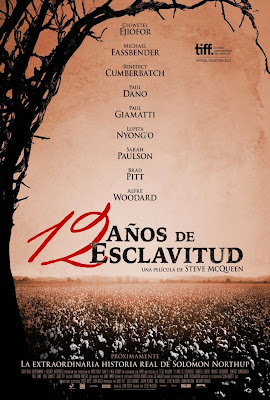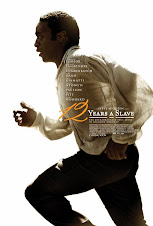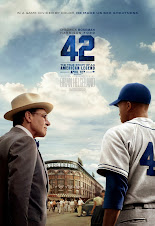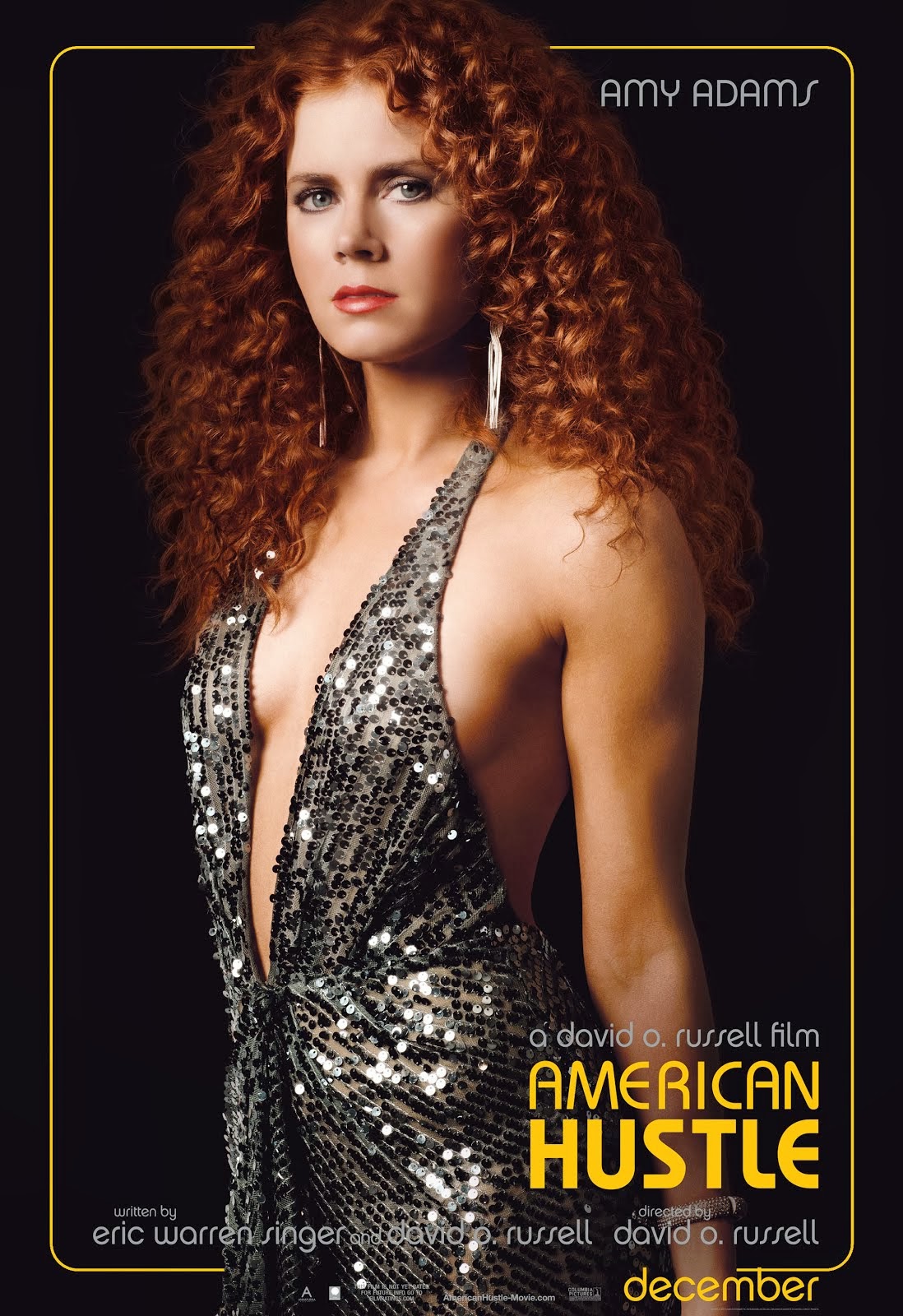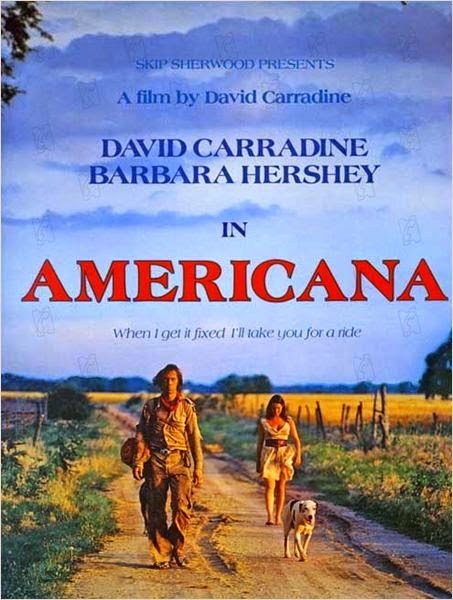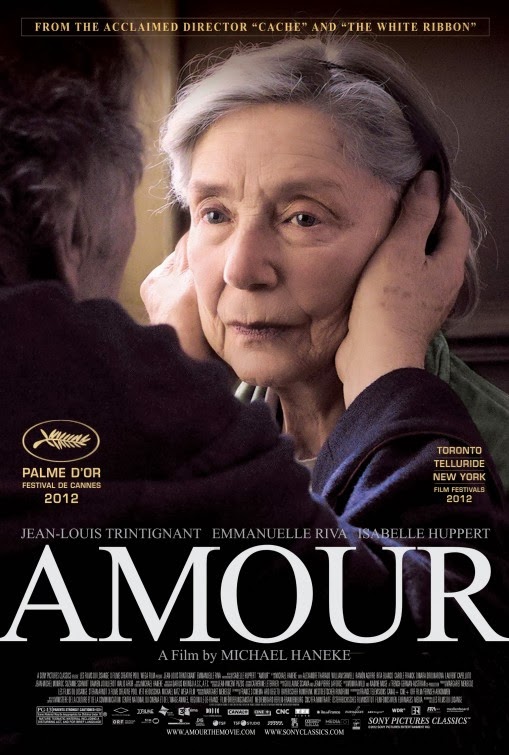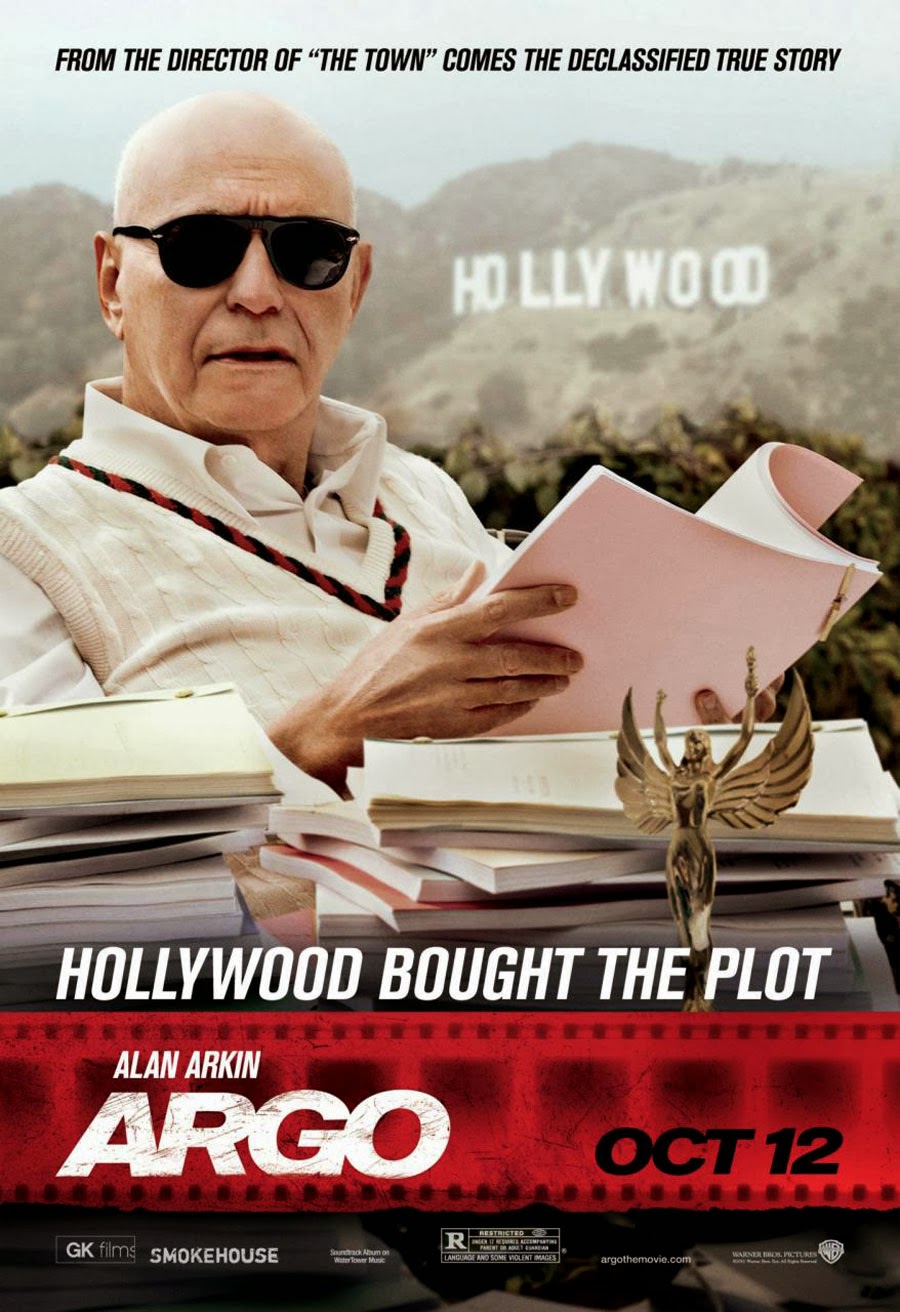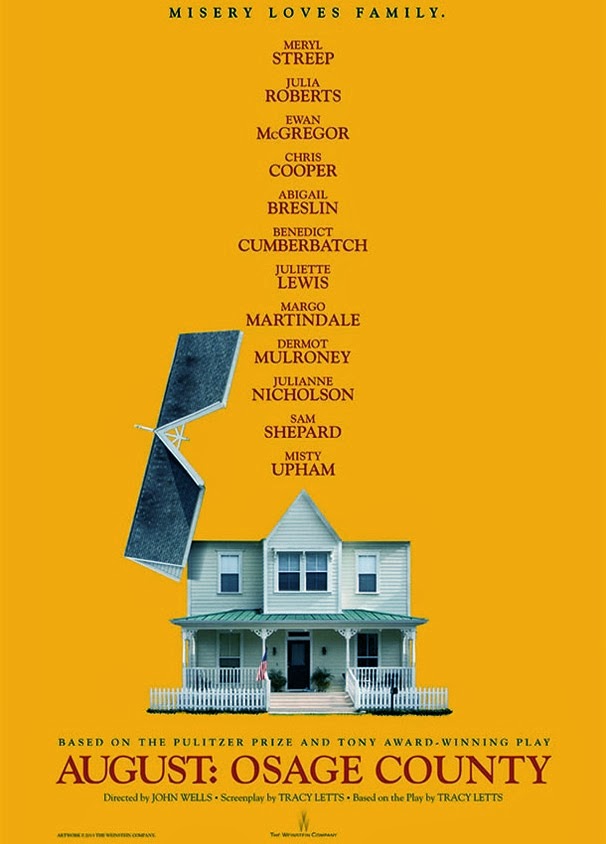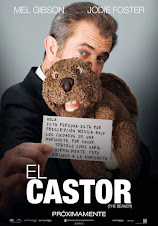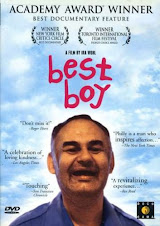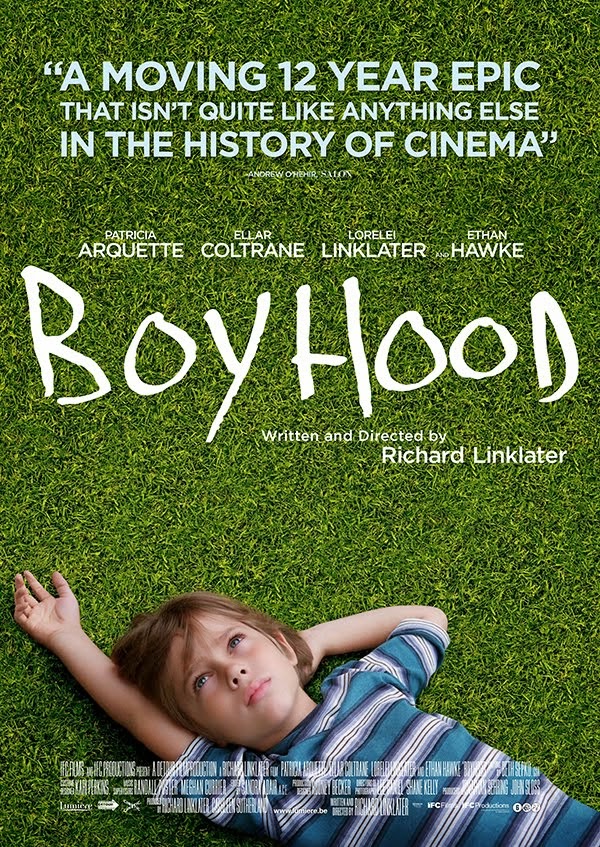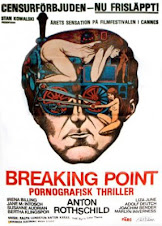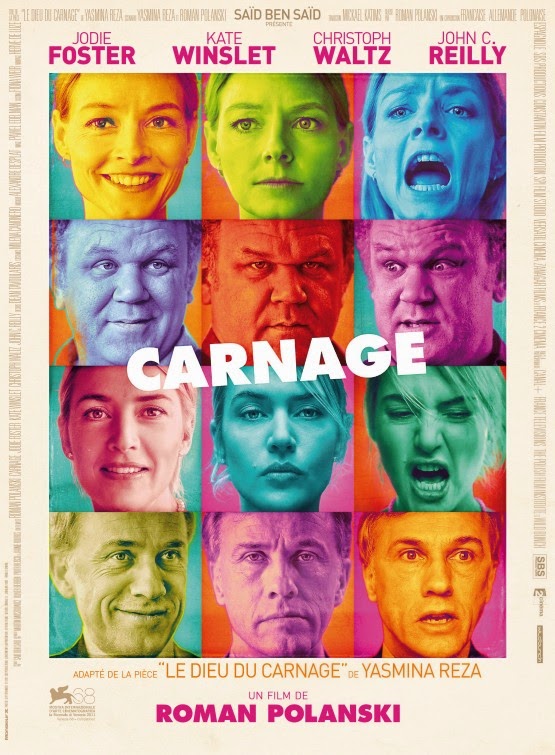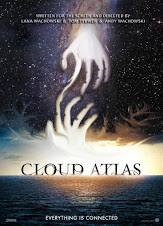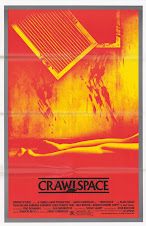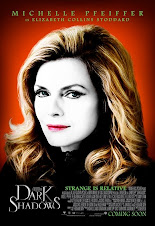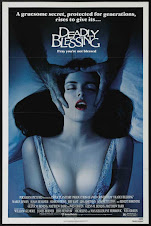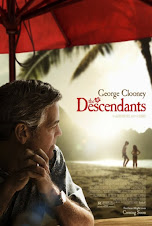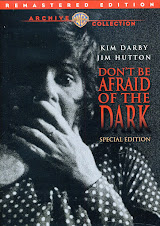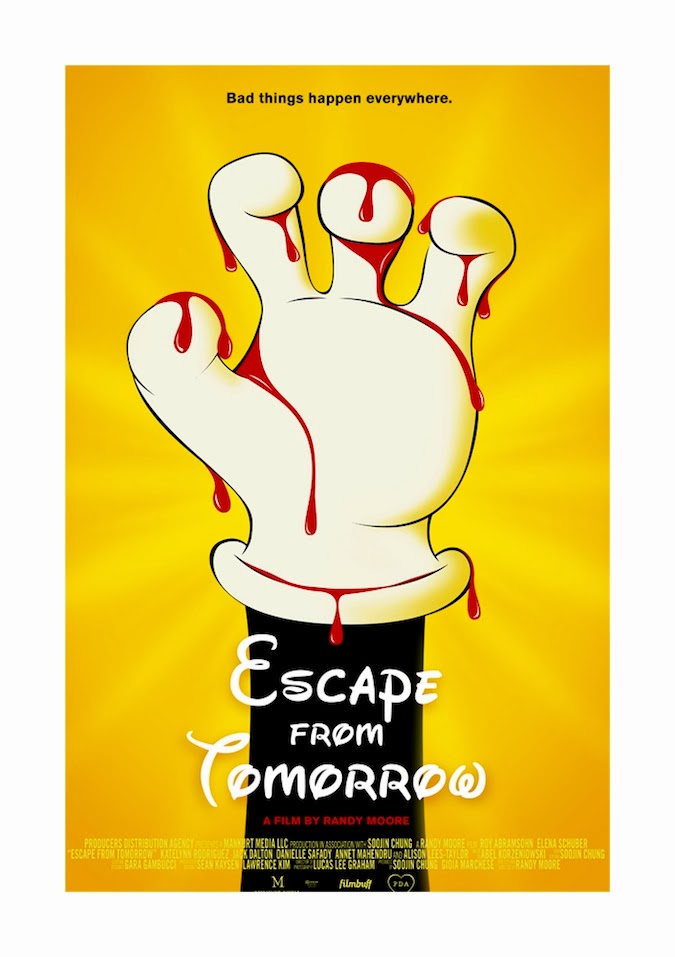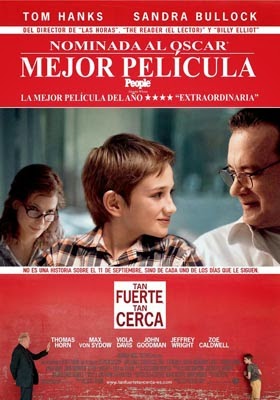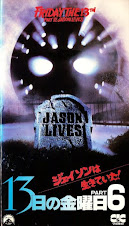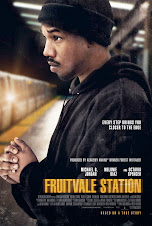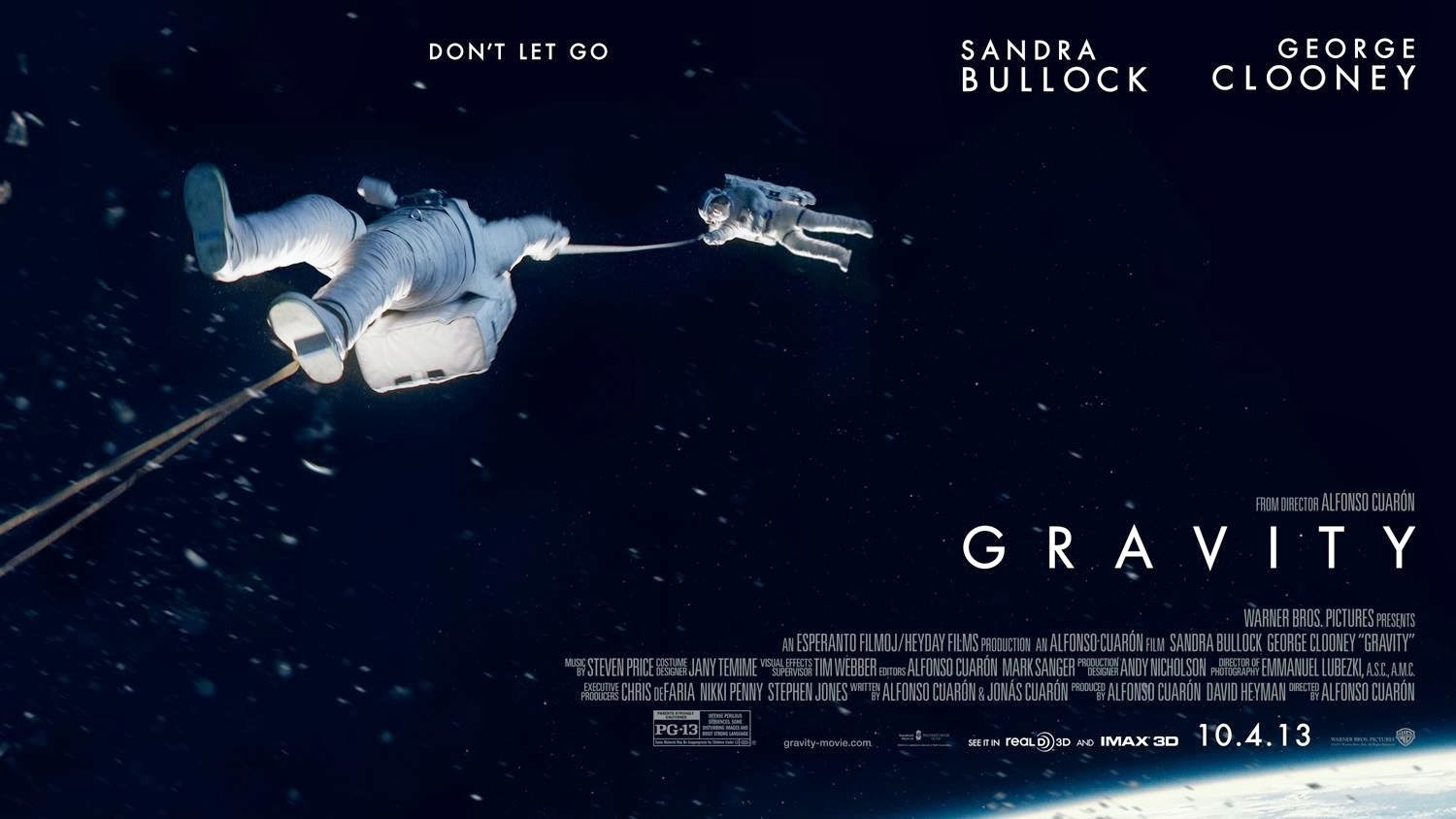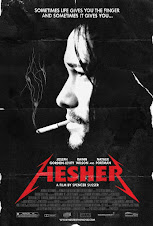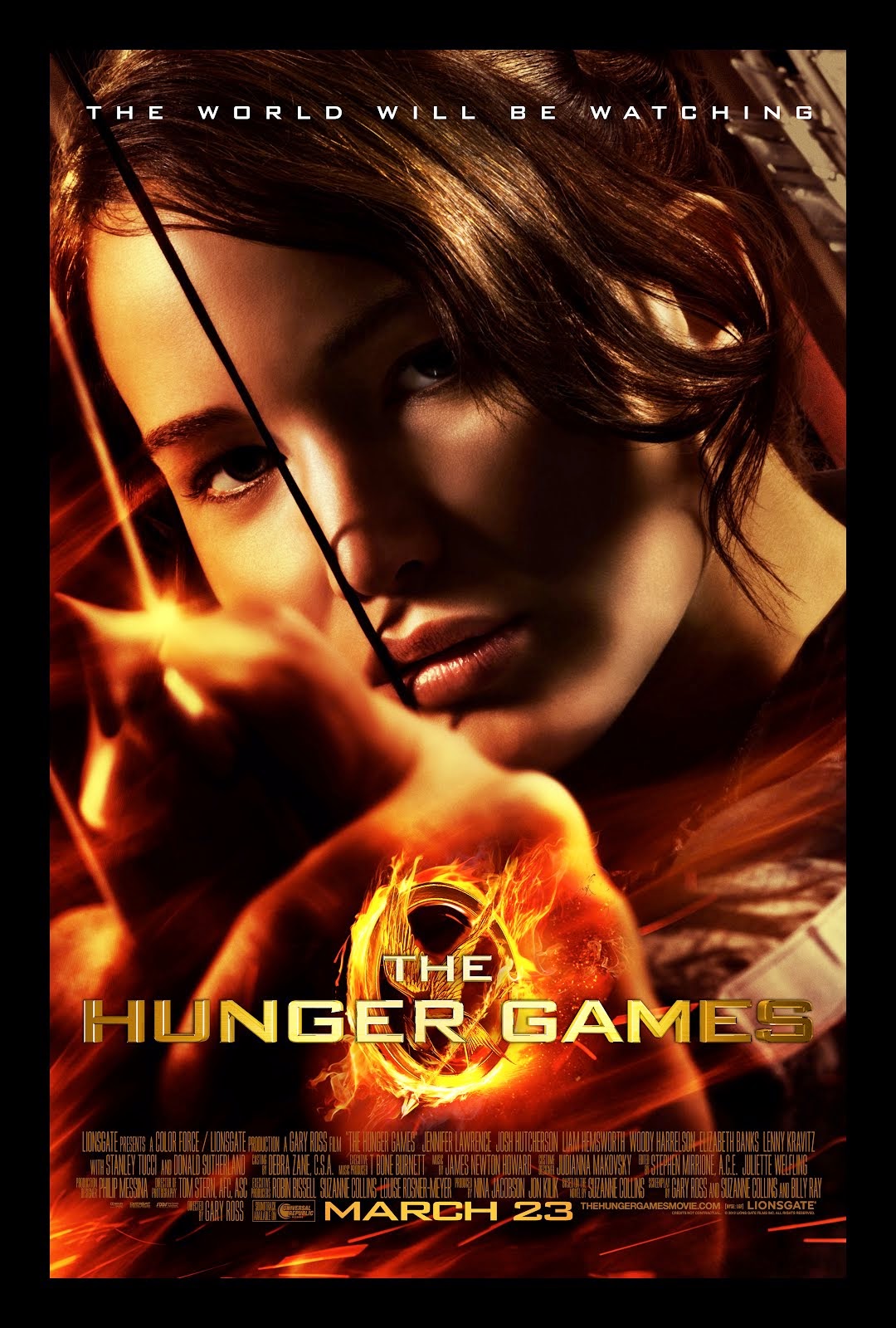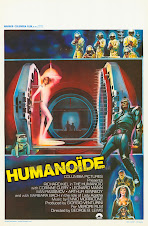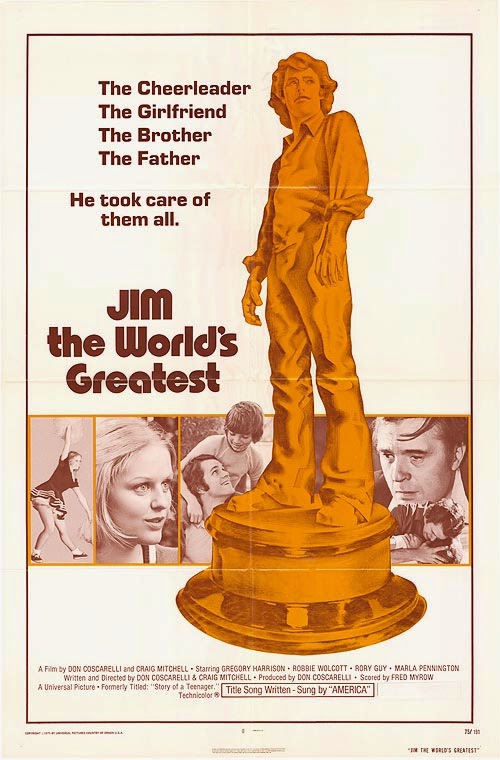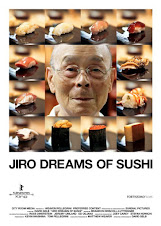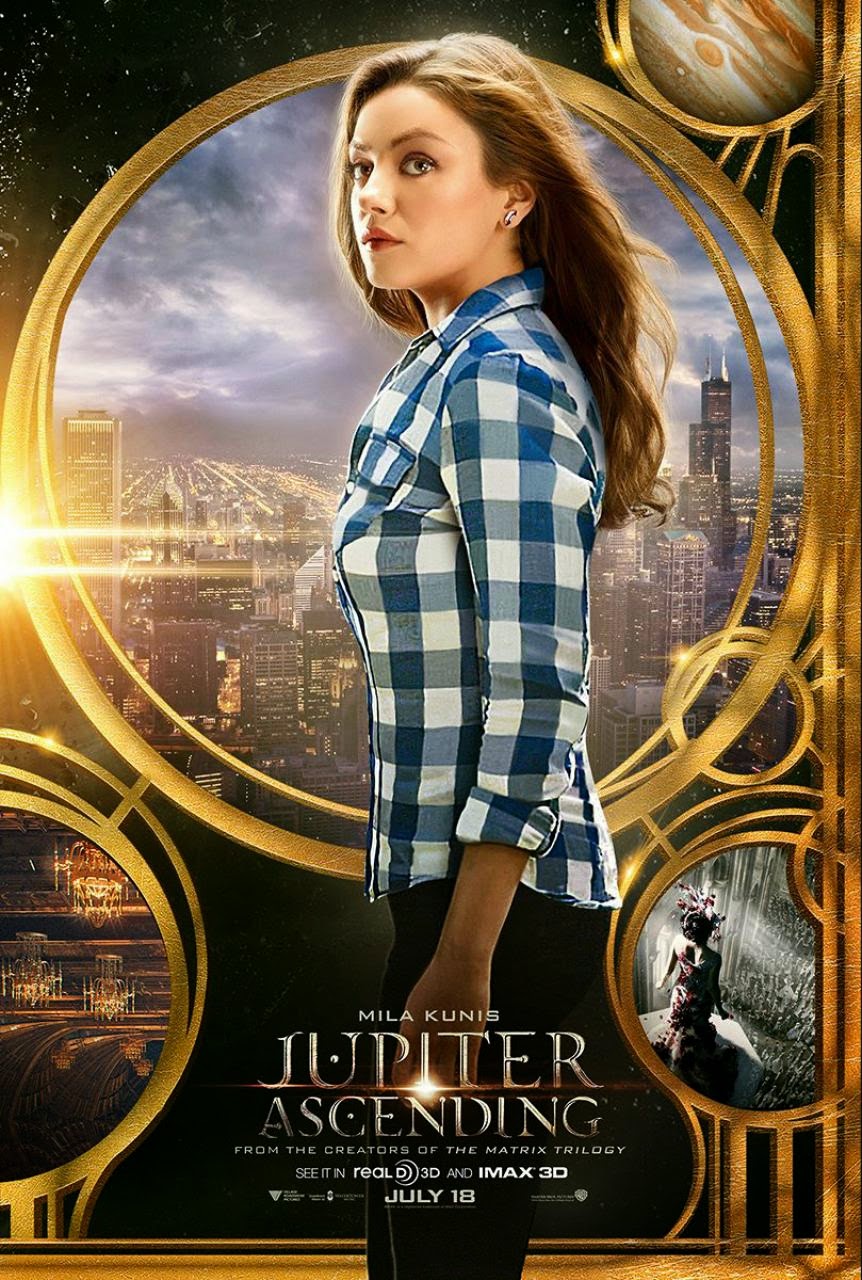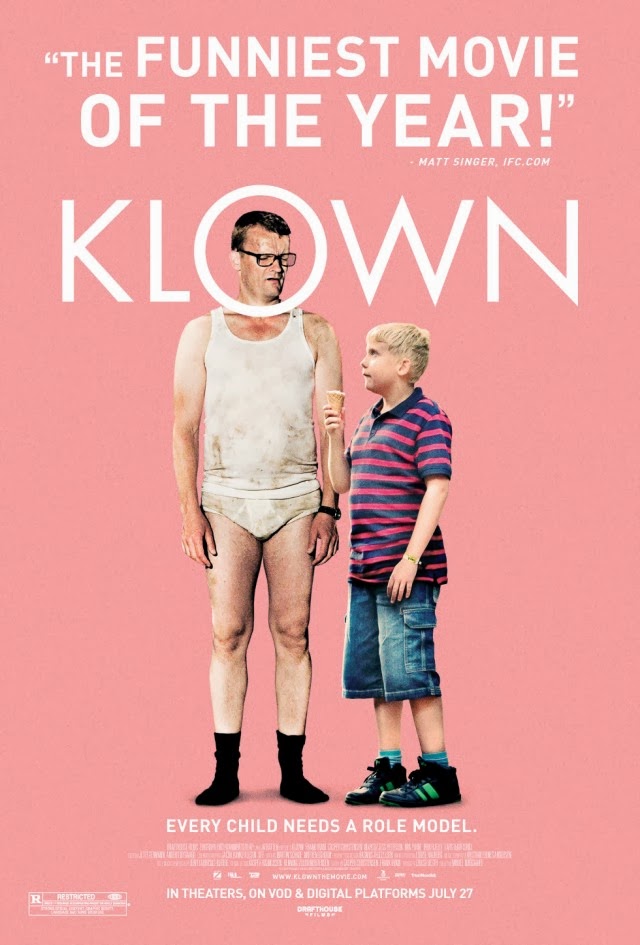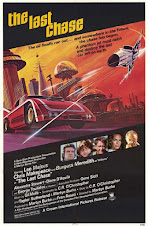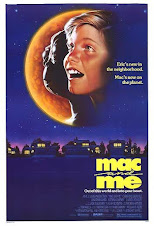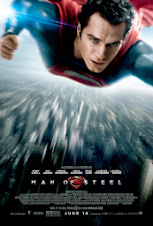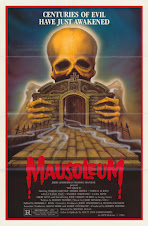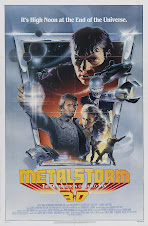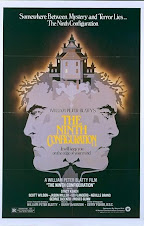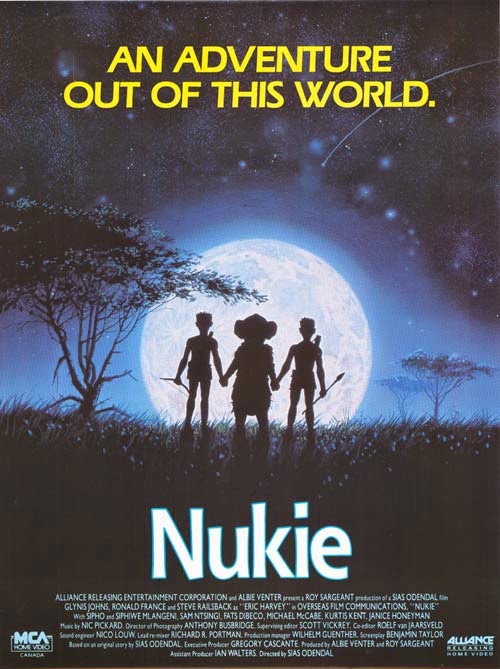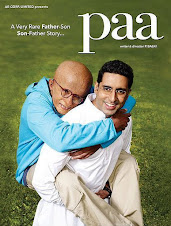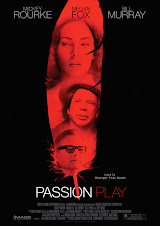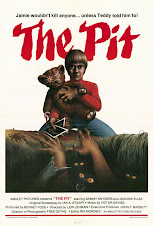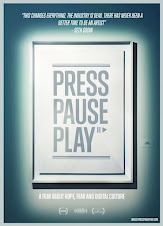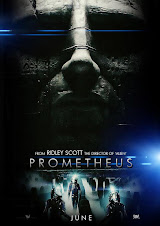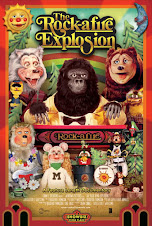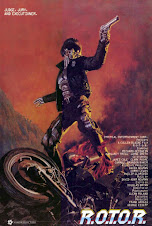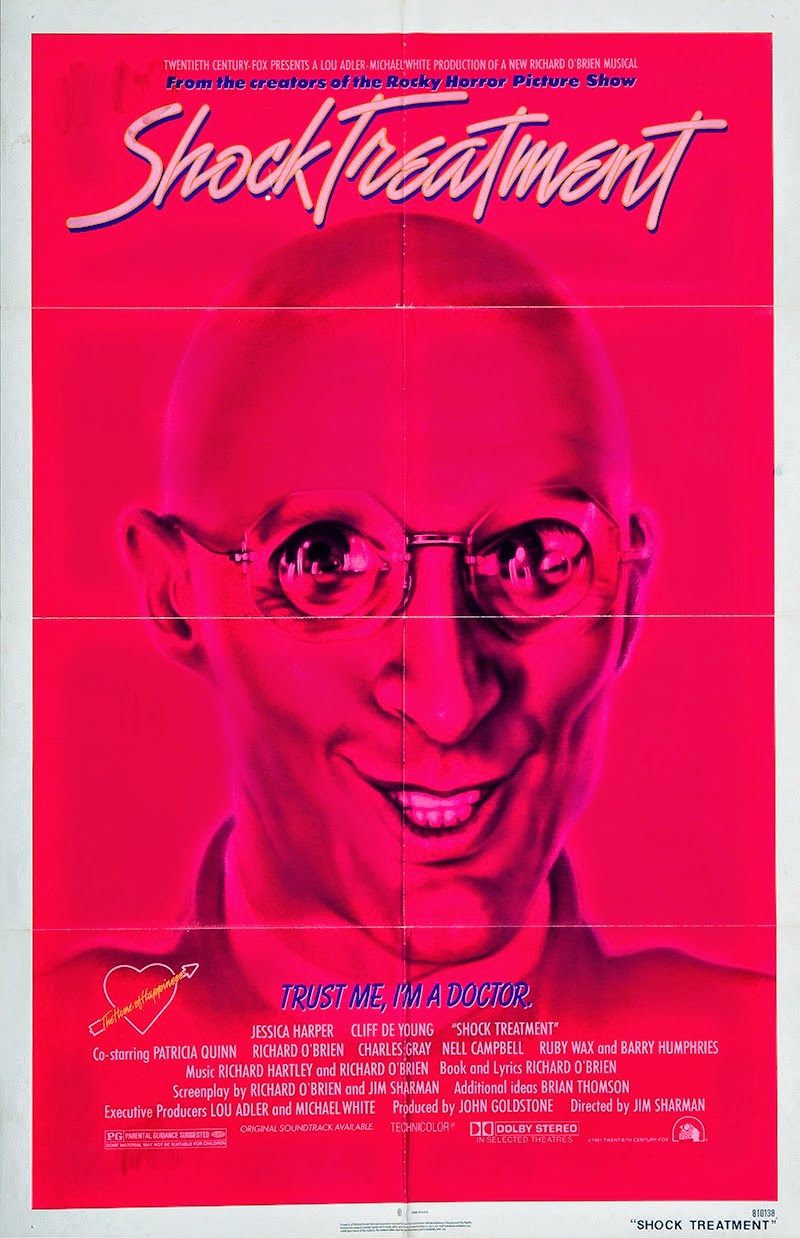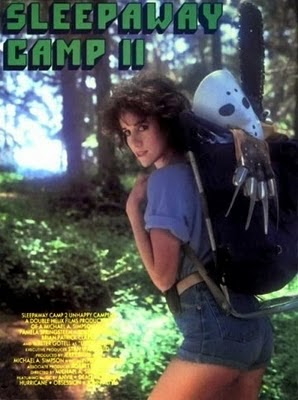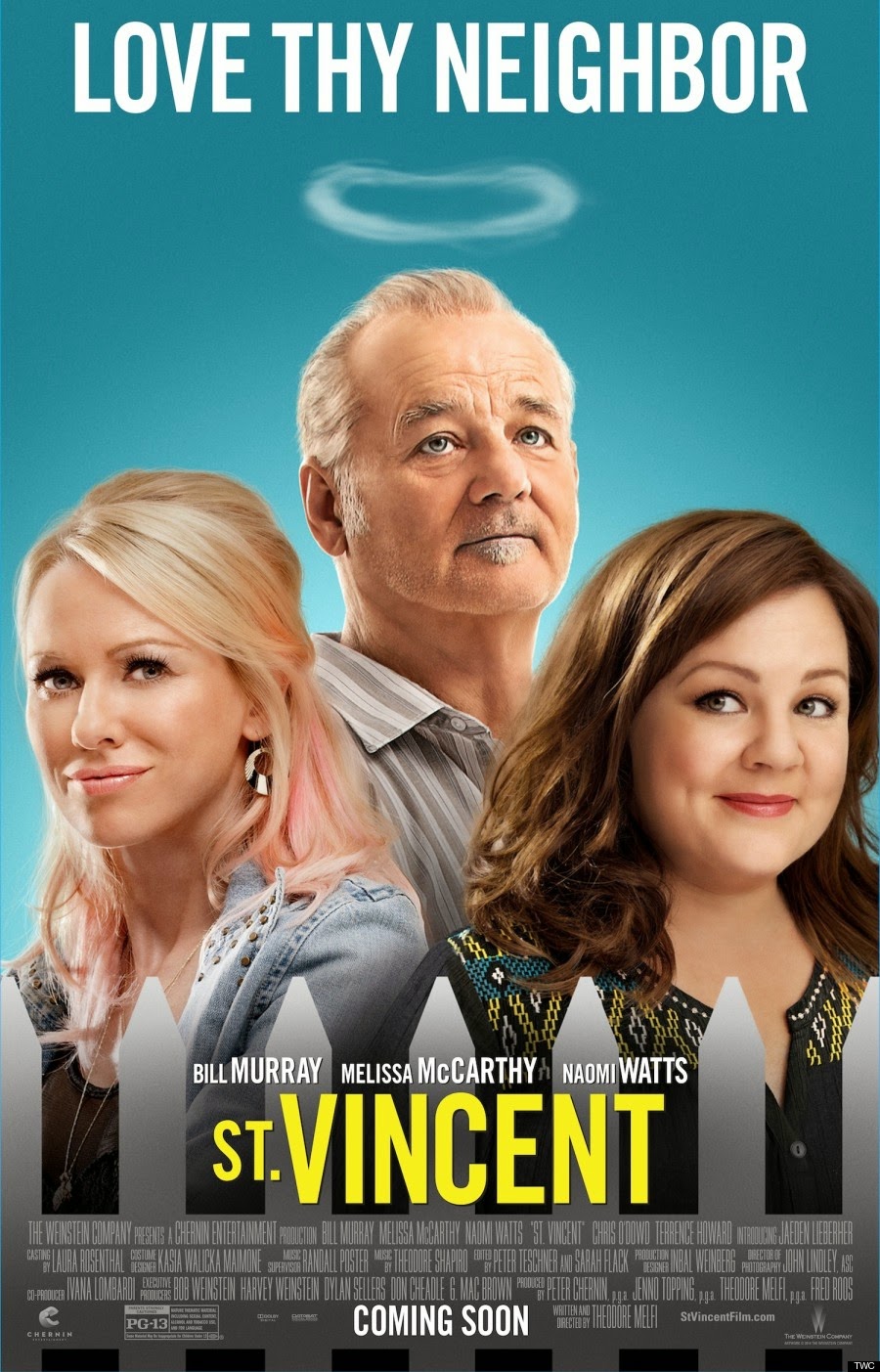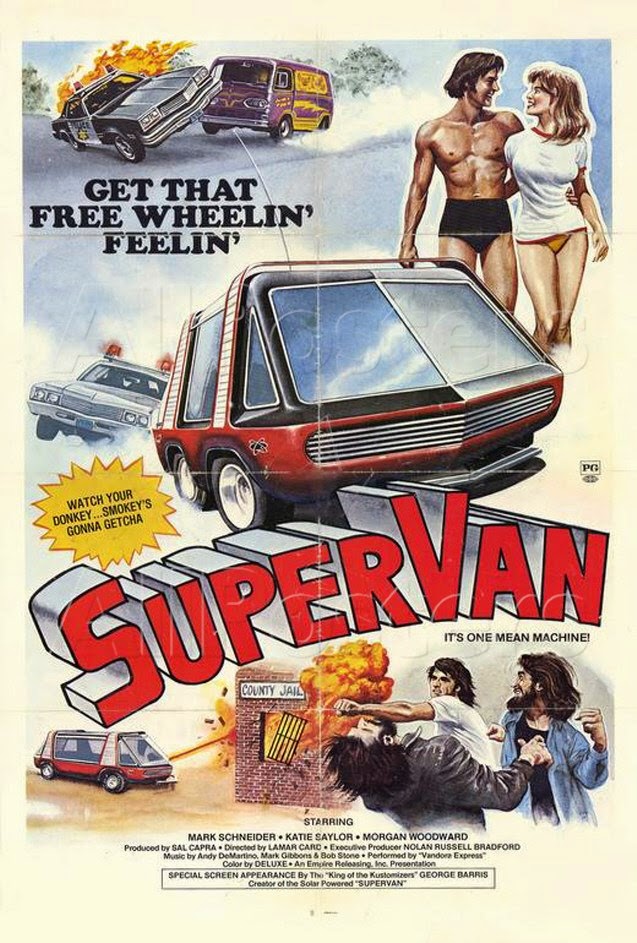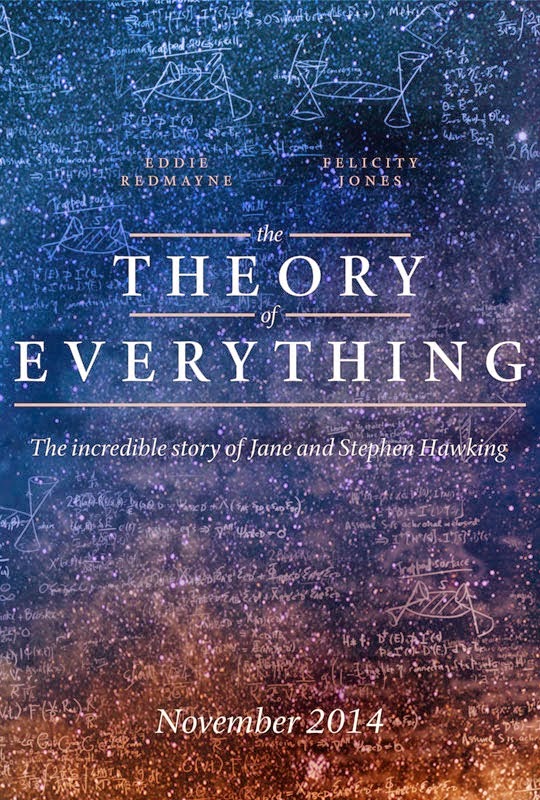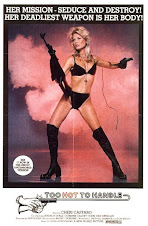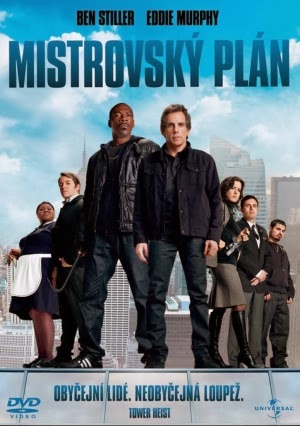“Night Train to Terror” is the cinematic equivalent of saying, “Screw it.” This horror anthology, kind of, film is comprised of three, at the time, unfinished films condensed into a 95 minute fun-filled delight. It is not a true anthology film like “Creepshow,” in which the segments were meant to be 25-30 minutes each and were written that way. “Night Train to Terror” takes what are presumably the best parts of these three films and places them amongst wraparound bits in which God and Satan discuss whether a particular character in each of the three segments deserve damnation of salvation. Before any philosophical debate begins, though, we are treated to the sounds of an on board nameless 80’s band that performs the same song four different times. You can enjoy the song here: It’s not a bad song and it never gets tiresome, nor does the film, despite it’s slapped together-edness. If you add “ed-ness” to the end of some words, you can maybe convince some of your friends that this new word actually exists.
At first glance, one may instinctively think that the slapped together nature of “Night Train to Terror” means that it is going to be a heap of dung. Such is not the case. It’s more of a heap of fun, especially if you go into to it with the right mindset. I originally saw this film on a crappy quality dvd, an obvious vhs to dvd transfer. I believe this is one of those many public domain films that get subpar dvd releases and usually are vhs to dvd transfers. Seeing “Night Train to Terror” on blu-ray (yes, I saw this movie on blu-ray….and paid to do so) is like seeing a different movie. The image is not distorted and the picture quality is very good. To be brief, the three stories are: 1. A man (John Phillip Law) is used as bait to lure women into an organ harvesting operation. Richard Moll from “Night Court” is in this segment as an orderly. 2. A man has an affair with another man’s girlfriend and is, as a strange kind of revenge, invited to participate in a “death wish club.” This is not a club that involves repeated viewings of those Charles Bronson movies. This segment features some curb-jumping style acting and an automotronic flying bug. 3. A writer’s latest book makes the claim that God does not exist. This man is played by Richard Moll from “Night Court,” so we get to see Bull once again, this time wearing what must surely be a toupee. Satan or one of Satan’s employees wants Bull to work for him at Satan Industries (We Put the “E” in Evil). The man who plays Satan looks like a cross between David Cassidy from “The Partridge Family” and Simon Ward, the actor who played a Satan-esque character in “Holocaust 2000.” That’s pretty much all you need, but this segment also features some funny Claymation effects, Cameron Mitchell hamming it up, and disco music!! The first film appears to have made in 1982 or 83, the second film around the same time, and the third film is definitely of the 1979 vintage. If it’s not obvious from the big collars and the disco music, it is from when Cameron Mitchell looks at a newspaper article from 1944 and says, “that was 35 years ago.” I can do math good.
“Night Train to Terror” is one of those many horror/sci-fi/adventure films of the period between 1974-1990 which are, to some, from the outside, disposable and unworthy of a second glance. I, however, embrace such films and, more often than not, am rewarded with a fun movie-watching experience. It all depends on your mindset as you go into it. If you go into such a movie thinking it will have no redeeming qualities, chances are your mind will not be changed. If you allow yourself to be immersed in a bizarre world full of oddities, you will sometimes be rewarded.
The new Vinegar Syndrome blu-ray release of “Night Train to Terror” contains two enjoyable commentary tracks. One track features the guys from the slasher movie podcast, “The Hysteria Continues.” This track is the more informative of the two about the film. These guys have done quite a bit of research and help to unravel some of the mysteries of this film. One very interesting note is that the first segment, about the man used as bait for women so as to harvest their organs, was again re-edited into a film released in 1992 entitled, “Marilyn Alive and Behind Bars.” The star of this segment, John Phillip Law, was brought back ten years later to shoot new scenes in this film which pretty much revolves around a different plot. The guys have lots more information to divulge and I will not repeat any of it here as it is their research, not mine that has uncovered this information. I did suspect, though, and it is mentioned in the commentary track, that the three segments in “Night Train to Terror” were originally Mormon movies, made to teach life lessons. It is mentioned in the commentary that the gore and nudity in the film were filmed separately from the tamer parts of these segments so as to make the film more marketable and to recoup some money. It is not referenced in the commentary track the connection between participants in “Night Train to Terror” and “Savage Journey,” aka “Brigham,” the 1977 Mormon film about Joseph Smith and Brigham Young. In that film, Maurice Grandmaison, who appears in the third segment of “Night Train” as Pipini, plays Brigham Young and Richard Moll plays Joseph Smith. The third segment of “Night Train” (later finished and titled “Cataclysm,” and later released in a Troma box set) in which they appear was made only 2 years later. “Cataclysm” and “Savage Journey” were both directed by Tom McGowan. John Carr directed the first and second segments.
One of the other credited directors of “Night Train to Terror,” Jay Schlossberg-Cohen, provides an interesting commentary track, however, his is more of the story of his career in show business. Eventually, the topic of “Night Train” is covered and we learn more interesting bits of information about the background of this film. Schlossberg-Cohen directed the gore and nudity portions of the film.
“Night Train to Terror” is a fun potpourri of strangeness, something most welcome by me. I suggest you purchase the set (it comes as a blu-ray/regular ray combo pack) from the retailer of your choice, unless the retailer of your choice is Lane Bryant or Home Depot, in which case you may have a hard time finding it.
Friday, November 8, 2013
The Brilliant and Beautiful "12 Years a Slave"
Steve McQueen’s “12 Years a Slave” is at the same time a beautiful, fantastic film and a rough and very difficult film to watch. For this reason, it achieves what few films can. It brings the viewer into a difficult place and time and while we watch events unfold, we marvel at how brilliant the performances are and how deftly handled storytelling in film can be in the right hands.
In an Oscar-nomination worthy performance, Chiwetel Ejiofor, who you may remember as The Operative in Joss Whedon’s “Serenity” and as Lola in “Kinky Boots,” plays Solomon Northrup, a free black man living in Saratoga, New York. He has his own property, a wife, and children. He is kidnapped and sold into slavery. Solomon’s struggle to keep his dignity and never lose faith that he would someday regain his freedom is the focus of the film.
The story, perhaps, is a familiar one, however, the way in which it is told by director, McQueen, and screenwriter John Ridley, based on the 1851 work entitled “Twelve Years a Slave,” written by Northrup, is not of a “feel-good” nature. The audience sees the horrors of slavery and the utter abhorrent attitudes of some slave owners, especially Edwin Epps, played wonderfully by Michael Fassbinder, who you may have seen in McQueen’s previous film, “Shame,” an almost equally uncomfortable, yet satisfying film. My mindset regarding film viewing is that if a film wants to show me uncomfortable things, that is great, as long as the film has redeeming qualities and the uncomfortableness makes a point. I don’t mind watching such things in a well-made film, in fact the gutsier a film is, the more I enjoy it, given the mentioned caveats. The scenes of violence and the inhumanity portrayed in “12 Years a Slave” serve a purpose. Further, “12 Years a Slave” is not another “slavery is bad” movie. The film is about Northrup and his unflinching desire to reestablish his life as a free man. I do applaud McQueen for not going the “feel good” route and not sugar-coating the reality of this deplorable and savage portion of our nation’s history. This is a strong, gutsy film, one that I hope will be recognized when Oscar nominations are announced in February. Another standout performance is that of Lupita Nyong’o as Patsey, a young slave who sees Solomon as a father figure, to put it, perhaps tritely, but this is basically their relationship in the film. Solomon sees her as a daughter as he has not seen his family in several years. It would not at all surprise me to learn that Ejiofor as Solomon, Nyong’o as Patsey, and Fassbinder as Epps have been nominated for Oscars. It would disappoint me if they are not nominated and if the film is not nominated for Best Picture. I do not believe I am overselling this film. It is that good as long as you have the constitution for it, as long as you can endure the harsh reality, mental and physical, of this part of American history. In “12 Years a Slave,” McQueen, several times throughout the film will stay on one shot for several seconds, sometimes even more than a minute or two. The purpose of this technique is for the audience to completely soak in what is being stated at that point in the film. It is a kind of way of the director telling us to “think about what you are seeing and let your mind come to grips with it.” It is not at all exploitive and the technique is not used to excess, however, when it is used, it is quite effective. I don’t know if it was the director’s intention, but there were times during the film that I was reminded of Werner Herzog’s technique of letting the audience, through the camera, be a bystander, someone watching from a distance, however, McQueen then, by staying on a shot for a long time, makes us more a part of a scene. Just as with another young director, Jeff Nichols (“Take Shelter,” “Mud”), Steve McQueen appears to be a director to watch for many years, one who, if form holds, will continue to make important, well-made films.
The entire cast of “12 Years a Slave” is outstanding, especially those performances already referenced. Brief appearances by Benedict Cumberbatch (“Sherlock,” “Star Trek Into Darkness”), Paul Giamatti (“Sideways,” “Win Win”), Alfre Woodard (“Grand Canyon,” “Star Trek: First Contact”), and co-producer, Brad Pitt, are very good. It’s always nice to see familiar faces in an excellent film. It is perfectly reasonable for me to think that the way I watch movies is uncommon and that the films I greatly enjoy are not ones enjoyed by a mass audience. I suppose it depends on how one defines “enjoy.” I take happiness from placing myself in a satisfying cinematic experience. If a film is well-written, well-acted, and manages to be unique in some way, even to the smallest degree, I have found enjoyment. “12 Years a Slave” fits those criteria, at least for me. If you are like-mined, I think you will enjoy this film as well.
The story, perhaps, is a familiar one, however, the way in which it is told by director, McQueen, and screenwriter John Ridley, based on the 1851 work entitled “Twelve Years a Slave,” written by Northrup, is not of a “feel-good” nature. The audience sees the horrors of slavery and the utter abhorrent attitudes of some slave owners, especially Edwin Epps, played wonderfully by Michael Fassbinder, who you may have seen in McQueen’s previous film, “Shame,” an almost equally uncomfortable, yet satisfying film. My mindset regarding film viewing is that if a film wants to show me uncomfortable things, that is great, as long as the film has redeeming qualities and the uncomfortableness makes a point. I don’t mind watching such things in a well-made film, in fact the gutsier a film is, the more I enjoy it, given the mentioned caveats. The scenes of violence and the inhumanity portrayed in “12 Years a Slave” serve a purpose. Further, “12 Years a Slave” is not another “slavery is bad” movie. The film is about Northrup and his unflinching desire to reestablish his life as a free man. I do applaud McQueen for not going the “feel good” route and not sugar-coating the reality of this deplorable and savage portion of our nation’s history. This is a strong, gutsy film, one that I hope will be recognized when Oscar nominations are announced in February. Another standout performance is that of Lupita Nyong’o as Patsey, a young slave who sees Solomon as a father figure, to put it, perhaps tritely, but this is basically their relationship in the film. Solomon sees her as a daughter as he has not seen his family in several years. It would not at all surprise me to learn that Ejiofor as Solomon, Nyong’o as Patsey, and Fassbinder as Epps have been nominated for Oscars. It would disappoint me if they are not nominated and if the film is not nominated for Best Picture. I do not believe I am overselling this film. It is that good as long as you have the constitution for it, as long as you can endure the harsh reality, mental and physical, of this part of American history. In “12 Years a Slave,” McQueen, several times throughout the film will stay on one shot for several seconds, sometimes even more than a minute or two. The purpose of this technique is for the audience to completely soak in what is being stated at that point in the film. It is a kind of way of the director telling us to “think about what you are seeing and let your mind come to grips with it.” It is not at all exploitive and the technique is not used to excess, however, when it is used, it is quite effective. I don’t know if it was the director’s intention, but there were times during the film that I was reminded of Werner Herzog’s technique of letting the audience, through the camera, be a bystander, someone watching from a distance, however, McQueen then, by staying on a shot for a long time, makes us more a part of a scene. Just as with another young director, Jeff Nichols (“Take Shelter,” “Mud”), Steve McQueen appears to be a director to watch for many years, one who, if form holds, will continue to make important, well-made films.
The entire cast of “12 Years a Slave” is outstanding, especially those performances already referenced. Brief appearances by Benedict Cumberbatch (“Sherlock,” “Star Trek Into Darkness”), Paul Giamatti (“Sideways,” “Win Win”), Alfre Woodard (“Grand Canyon,” “Star Trek: First Contact”), and co-producer, Brad Pitt, are very good. It’s always nice to see familiar faces in an excellent film. It is perfectly reasonable for me to think that the way I watch movies is uncommon and that the films I greatly enjoy are not ones enjoyed by a mass audience. I suppose it depends on how one defines “enjoy.” I take happiness from placing myself in a satisfying cinematic experience. If a film is well-written, well-acted, and manages to be unique in some way, even to the smallest degree, I have found enjoyment. “12 Years a Slave” fits those criteria, at least for me. If you are like-mined, I think you will enjoy this film as well.
Subscribe to:
Posts (Atom)


